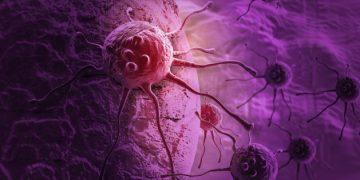Colon polyps are small growths that look like bumps on the inside lining of your colon and large intestine (called your rectum). They don’t cause any symptoms. Most polyps aren’t harmful, but some can become cancerous.
Doctors don’t know why polyps form. Normally, cells grow and divide in an orderly way. But changes in certain genes can cause cells to continue dividing even when new ones aren’t needed, and this can lead to polyps.
Most colon polyps don’t cause any symptoms, but some people experience rectal bleeding or blood in their stool, abdominal pain or constipation. If you have these symptoms, your doctor may order a test called a barium enema or a colonoscopy to find out if you have polyps.
Polyps can develop from many different causes, including certain dietary habits and health problems. Some factors may raise your risk of developing polyps, such as obesity, smoking or eating a diet that is high in saturated fat and red meat. Taking medications to help your body digest certain foods and getting regular exercise can also decrease your chances of having colon polyps.
The most common type of polyp is called an adenoma. Most adenomas are small, and most never develop into cancer.
Other types of polyps can become cancerous if they are not removed before they have a chance to spread and grow. These include hyperplastic or inflammatory polyps and adenomatous or serrated polyps.
Adenomatous and serrated polyps are more likely to develop into cancer than other types of polyps, but they can also form without any warning signs. They usually appear in people with a rare genetic condition called familial adenomatous polyposis (FAP).

Your doctor may recommend that you have regular screening tests for colon polyps and colorectal cancer. This is especially important if you are male, over age 50 or have certain risk factors for colon cancer, such as a family history of the disease.
If you have polyps, your doctor can remove them during a test called a colonoscopy. A colonoscopy uses a long, thin tube with a light and camera at the end to examine your colon for polyps. Your doctor will tell you what to expect during the procedure.
You will need to be on a clear liquid diet and take a laxative before the test, so that your colon is completely empty. Your doctor will remove most polyps, and then send them to a lab for testing.
Once the polyps are removed, your doctor will recommend that you have follow-up testing to see if any new polyps have formed. This is typically done 3 to 5 years after your polyps have been removed.
During your regular colonoscopy, your doctor will look for and remove any polyps that are larger than a few centimeters in diameter. Then, they will analyze the tissue samples for any sign of cancer that might have developed during the polyps’ growth.
If your doctor finds any polyps that are cancerous, they will remove them with surgery and refer you to a doctor who specializes in colon cancer treatment. Your doctor can also recommend other treatments, such as chemotherapy or radiation.








